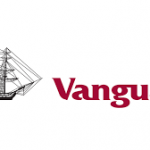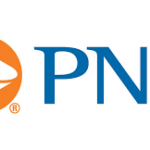DOCUMENTED SYSTEMIC FIDUCIARY PROCESS
What makes bank trust departments so successful in managing investments for their trust clients? A documentable process for how investments are managed, pursuant to the confines of the governing trust document, while at the prudent man rule and fiduciary level. Do the investment expenses have to be the lowest in the market? Must the investments outperform all of their peers? Must the trust beneficiaries always agree with your actions?
These are interesting questions, but anyone who has worked for a period of time in a bank trust department can tell you the answer to these questions is no. However, the answer isn’t the interesting point here. What is of deep interest here is why. Why is the answer no? Because there is a documentable process in place whereby the investments are managed pursuant to strict guidelines, at the fiduciary level. Time and again, the courts rule in favor of the bank during litigation when the bank can explain what their process is, and prove they followed it.
If we focus on the meaning of this process and bring it to the front of our attention, then we can see with a new found clarity why banks should seriously consider outsourcing their participant advice capability.
NEW FIDUCIARY RULE & HOW BANKS DELIVER PARTICIPANT ADVICE
Now that we have our recently focused view provided through the lens of a documented, repeatable process for how investments are managed appropriately, shift your gaze upon how your bank typically provides participant advice to plan participants. We define participant advice as providing retirement income planning so a participant knows what they should be saving for retirement, while also providing specific investment advice on which funds to invest with based upon the results of the retirement income planning.
You now very likely see that there are gaping holes in the process for how this is delivered throughout the various channels of the bank. One trust officer may look online for trusted planning calculators to see what should be done. While another trust officer feels comfortable using their own financial planning calculator to help the participant. A third trust officer hopes they don’t receive these emails or calls from participants since these are so time consuming. There are three key points to take away from this very real situation.
1. There is no process in place. Each trust officer, as altruistic and well-intended as they may be, is acting on their own, based upon their unique biases and preferences. Do trust departments manage investments this way? Why not?
2. The new fiduciary rule brings an enhanced focus on the process for how participant advice is rendered. Not, having a process is a significant exposure to liability. Who better than a bank trust officer to understand what this liability is. So the genie is now out of the bottle and you cannot ignore what you now know. Which is that you have a myriad of ways you deliver advice to participants, and you can’t document what your process is, nor prove that you followed it, if in fact you had one, which in all likelihood, you don’t.
3. The 3rd key take away here is what is this costing the trust department and the bank in lost productivity of highly skilled, and expensive, trust officers providing planning and advice to plan participants whose account probably averages about $40k? If you calculate the hours spent annually providing this advice versus what the bank makes in fees off those balances of the consulted participants, this is a significant loss. Then there’s the opportunity cost of lost prospecting and business development, or account servicing with the tier A and B clients you want to spend time with.
For these reasons, the status quo is not what excellence in your profession shoots for. Instead it’s a very average and overly expensive way to help participants, and continuing to do so will be at your own peril of becoming obsolete while your competitors differentiate and move to a more productive and less expensive solution.
OUTSOURCE ADVICE, WHILE MAKING IT YOUR OWN
How can you outsource when you already sell yourself as providing this advice to participants? You say it’s impossible to have someone else do the planning since the client is supposed to see that you are doing this? These are all very valid concerns but are now unfounded as you can use vendors to help you power your own solution. You don’t have to do the heaving lifting of profiling participants, analyzing their data, formulating recommendations, and then counseling them on what to do. How?
Do you ever use Morningstar to look up an investment’s analytical data? Why don’t you just look up the various metrics yourself and then perform the intricate calculations to arrive at such things as returns, alpha, beta, standard deviation, Sharpe ratio, etc.? It’s too time consuming and not worth your effort when a turnkey solution like Morningstar is readily available to use.
The same exists for participant advice. Vendors can capture all your plan data, down to the participant level, and render CFP® Board of Standards caliber retirement income planning and specific investment advice. These reports can be mailed to participants or included with their statements. The bank can have all of these reports saved in the cloud and on your bank network drive so if you ever receive the email or call, you can immediately pull the report up and answer the questions immediately to the participant and refer them to their report and/or send them a copy of what you just looked at. This just saved you a couple hours of effort on just one person.
Most importantly, the regimented process for the advice rendered was the same for ALL reports. The vendor should be a fiduciary participant advice provider, and this should be the only service they perform, and not sell products, or have any conflicts of interest. If you have the right provider, you have just saved yourself and the bank immeasurable time and expense, while focusing you on higher and better pursuits. Moreover, it protects the bank with a uniformed process for participant advice, and it helps participant outcomes as you now proactively deliver advice to everyone, versus your old reactive model where someone had to ask a questions to get help.
Talk to someone today about how this service could integrate with your system and learn how reasonably priced this solution can be for you to take your retirement practice to the next level while mitigating your liability.







